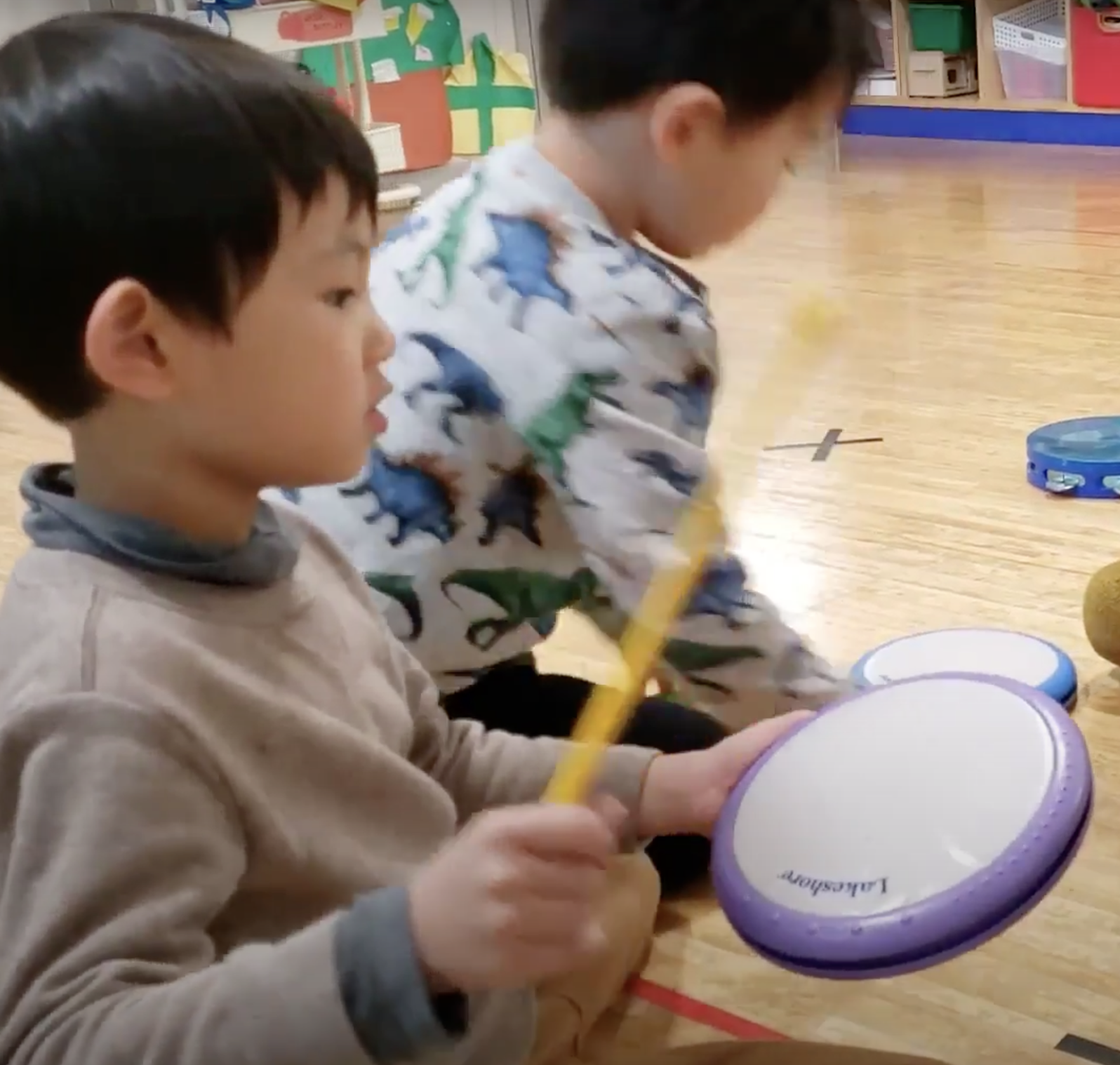All A-JB campuses have adopted the International Baccalaureate(IB) Primary Years Programme (PYP), a global standard curriculum framework.
At the heart of the early years PYP there is a belief that students’ interest in learning should come from intrinsic motivation. A child with intrinsic motivation wants to do a task for the pleasure involved in doing the task itself. An example of this would be that we enjoy spending time with our friends because it’s fun to do, not because we are forced to. In a learning environment this motivation allows students to feel free to express themselves creatively and explore questions that they want to.
Students’ intrinsic motivation comes from the urge to explore the environment around them and in doing so, they naturally develop the skills and attitudes necessary to be the driving force for their local and global communities, innovators and artists who may take on less traditional paths.
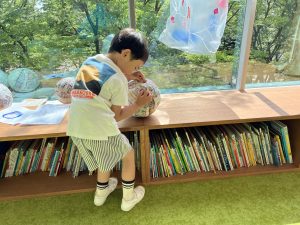
If that seems like a lot, then let me give you an example of how inquiry-based learning can lead to exciting discoveries in the classroom and how they have a ripple effect on future learning. In this example, I will talk about a student who has since graduated from Aoba-Japan Bilingual Preschool, and how his experience within inquiry-based learning and open-minded parents impacted his future schooling and interests.
In the following picture, you can see a beautifully laid out learning space and an invitation for students to explore playing with kitchen toys. You can also see that the students have a complete lack of interest in exploring this adult-led play experience.
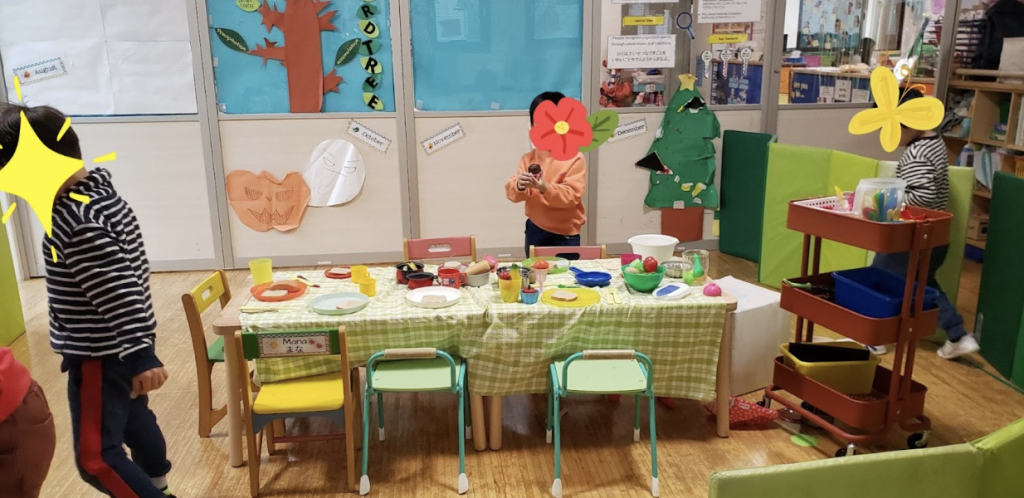
Instead something much more exciting and loud happened in another corner of the classroom….
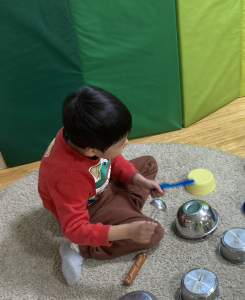
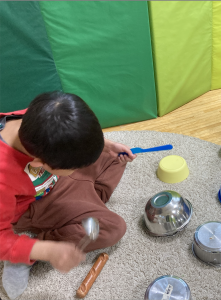
A noisy pots and pans drum party!!!
Though not remarkable to some, and maybe considered irritating to others, being opened-minded and allowing this type of exploration can not only be fun and lively for the students but allow for a wonderful learning experience. The above photo shows a setting that the teacher laid out expecting the children to be curious and play, but as you can see, no one is using the items at all! Instead, students are exploring their environment in a different, more unexpected way.
Through experience, this student was able to explore his musicality and rhythm skills which would also lead to gathering friends to create a band, taking on different roles and developing social-emotional skills along the way, all through his own intrinsic motivations within a responsive environment.
This motivation for creating fun, exploring sounds and interacting in friends also impacted other students in the class. During their free time, students felt free to explore materials and their space in a different way; using chairs to set up a stage or teaching each other dance routines and roleplay. This interest persisted in our classroom and we encouraged it as much as possible.
I remember that one year, as part of our unit of inquiry, we learned about celebrations, and as a class had a Lunar New Year party. As a result, students enjoyed creating a ‘dragon dance’ and organized themselves into groups. This student, accompanied by a music track (which he requested) enjoyed playing drums as the students played and performed. It was great fun to see such wonderful collaboration with one another and an opportunity to explore their interests within the PYP framework.
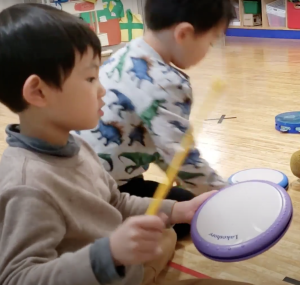
This particular students’ interest in drumming resulted in being a large part of his learning journey which was shared with his parents. The student was subsequently enrolled into regular drumming lessons and is still continuing to learn the drums to this day! Who knows what the future holds for him if he continues his interest in music.
Prioritising agency and intrinsic motivation is essential in creating well-rounded learners who feel supported in their learning journeys. But how do we as educators and guardians support this type of environment for children?
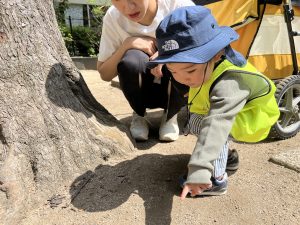
A large part of children’s learning comes from play; for children, play is work and an essential part of them being able to develop their skills and curiosities. It gives them opportunities to experiment as well as explore their own agency.
A-JB aims to create an inclusive environment that provides comprehensive support for all students. By providing a supportive learning environment that fosters the qualities of curiosity and creativity, we can help students become lifelong, global learners who are passionate about exploring the world around them.
Michelle Jones : After graduating with a BA in English literature, I worked with the Gwynedd Council and National Trust. Mostly notably in community projects and the 'Wild Elements' summer programme, delivering outdoor experiences and education for young people. I've worked with Aoba since 2017 in the ALA Saturday programme as a teacher and curriculum developer. I've also been a teacher in Aoba's main programme with K1, 2, 4 and 5 and currently I am the PYP Coordinator for A-JB Yoga Campus.

